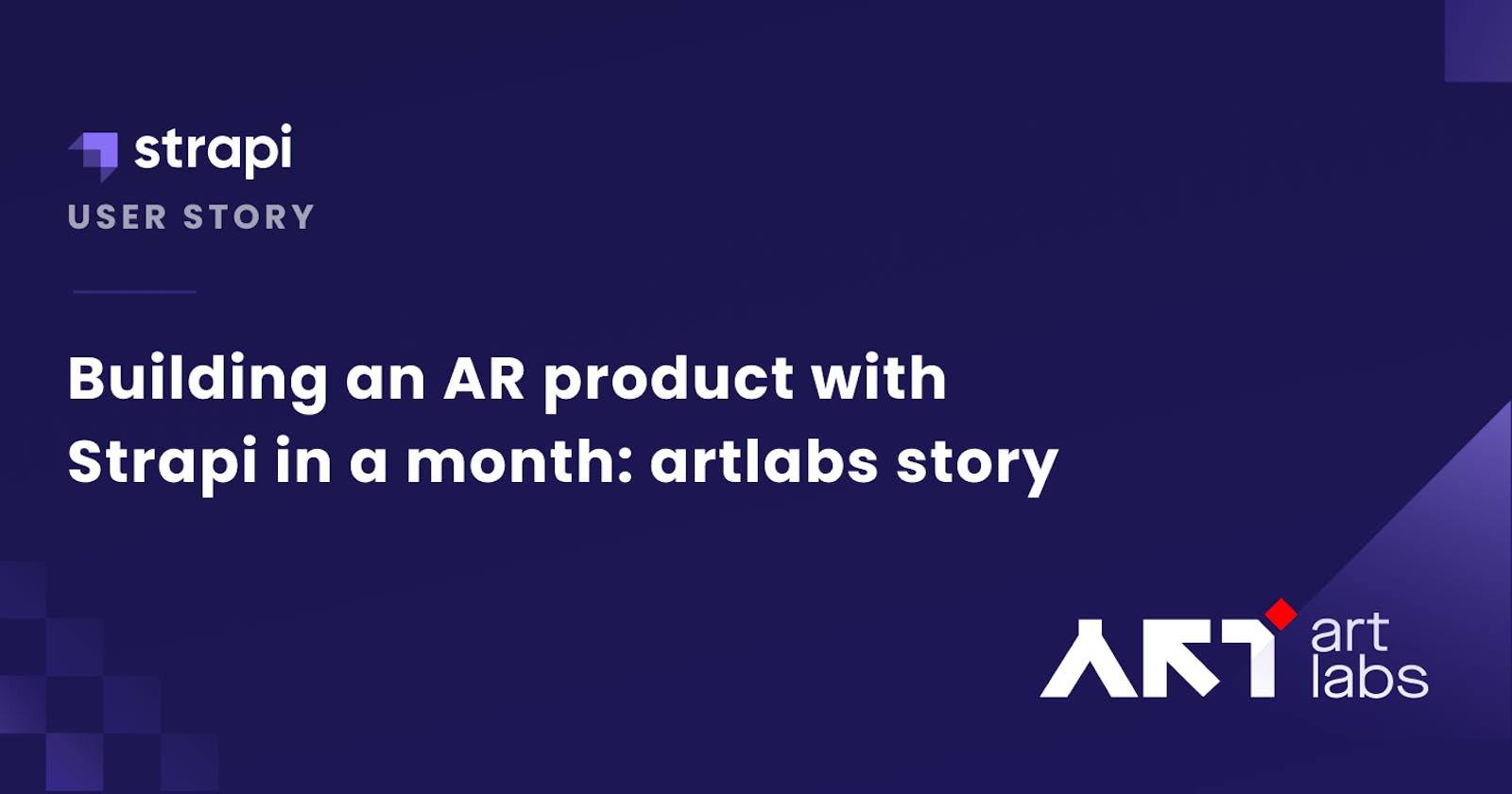Building an AR product with Strapi in a month: artlabs story
artlabs used Strapi to create a 3D & AR platform for commerce and metaverse, that allows companies to leverage Augmented Reality for their businesses.
Author: Anastasiia Shpiliak
Artlabs is a 3D & AR platform for commerce and metaverse. They built their product using Strapi in only a month - and are already successfully monetizing it, allowing companies to leverage Augmented Reality for their businesses.
What’s artlabs?
artlabs helps e-commerce companies to bring their products to life thanks to 3D and AR technologies. We are on a mission to help brands have a strong presence in the metaverse by bridging the physical and digital.

In a nutshell, artlabs built a platform that lets brands and retailers turn their physical products into 3D digital assets by providing an efficient, fast and reliable process for e-commerce and interoperability for NFT creators and metaverse. After creating the 3D models, we give our customers flexibility and complete control to manage and deploy assets into their platform without involving a development team. We define ourselves as a scalable content creation and distribution engine specially designed for 3D.
With the help of Strapi, we provide standardization, automation, organization, and distribution of 3D assets with a single API and no-developer solution. By using our content management system, there are many applications that you can create or build, including immersive shopping experiences, 3D ads, AR/VR apps, or NFT collections.
How did you come up with the artlabs idea?
We have been testing and implementing various startup ideas in the AR field. At first, we were coding everything from scratch - it was way too time consuming. That’s why we started using different Node.js frameworks, such as Sails.js. They facilitated REST API generation for us, however, they had many drawbacks. It was challenging to constantly try out different frameworks and maintain them.
We wanted to have a stable platform without high effort to test and iterate. We tried Keystone.js and Contentful, but Strapi was the best fit. We liked the fact that it’s open-source, and has features like role-based access control, no-code API builder, media library, highly customizable controllers, and a complete admin dashboard.
How did you implement Strapi in the project?
We use two Strapi instances for our products. One Strapi example serves our Platform API, a warehouse for 3D models and gateway to SDKs. It uses dockerized Strapi v3 with MongoDB hosted on AWS that can scale to billions of requests per month with a robust Cloudflare Cache.
This system allows us to serve our clients with millions of 3D models without interruption. As a result, our 3D warehouse is becoming one of the largest 3D sneaker databases in the world. Another excellent opportunity was having role-based access control and allowing our clients to control their 3D content to publish on their website.

The other instance hosts our artlabs Studio, our internal dashboard for 3D model generation processes. It utilizes a distributed system of long-running tasks in multiple environments. We use dockerized Strapi v4 as an auth gateway, model warehouse, and job orchestrator. The product is used internally, however, we will make it public with the new releases to democratize automated 3D workflows.
How are you sharing access to the platform with external users?
Our clients access the platform only via API, which is made possible with API tokens and RBAC roles. We have a Public API role assigned to users and users assigned to Organization and Tokens.
The Role-Based Access Control feature comes as a part of Strapi Enterprise Edition, and we use it for both instances.
Using Strapi's RBAC feature, we can distribute artlabs studio roles internally and externally. For example, we have been using 3D artist, photographer, and admin roles internally. These roles allow us to share modules related to their day-to-day tasks. In addition, for our customers in e-commerce and metaverse, we let them make their assets AR-Ready, and metaverse ready by just giving them access to the automation module.
How much time did it take you to launch the application?
If we developed everything from scratch, it would take us more than 4 months. With Strapi, we released artlabs Studio in one month with only three engineers working on it full-time. One month after that, we already had the first client.
For a startup, moving and iterating fast is crucial, and with Strapi we can achieve this velocity.
How did Strapi help you grow the business?
Strapi is a building block of our platform that we're monetizing. One of our customers, a Hepsiburada marketplace, used the artlabs platform to let their customers virtually place the furniture in the room and paintings on the wall. Over two years, the traffic of the marketplace is 200k requests / month, and it continues to grow, while the conversion rate grew up to 200%.
Another great example is the two-month pilot of a virtual try-on technology run with the leading global footwear retailer. During the pilot, we reached 25,000 users with the virtual try-on, and 10.000 users experienced AR. After gathering insights and analytics for the pilot, we saw a double-digit increase in conversion.
We constantly expand our client portfolio, and with the help of Strapi, we do not encounter any scalability and interruption issues. We grew from 3 to 25 passionate team members over three years. In Q3 2022, our technology reached more than 2 million users and 18 million views.
We are one of the fastest-growing tech companies in the region with the support of our partners and clients worldwide. artlabs is a part of the AI-focused NVidia inception program, Polygon DAO accelerator, and a principal member of the Metaverse Standards Forum. We partnered with many digital fashion NFT marketplaces as well.

